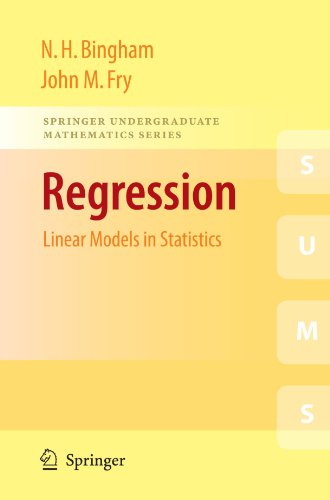

Most ebook files are in PDF format, so you can easily read them using various software such as Foxit Reader or directly on the Google Chrome browser.
Some ebook files are released by publishers in other formats such as .awz, .mobi, .epub, .fb2, etc. You may need to install specific software to read these formats on mobile/PC, such as Calibre.
Please read the tutorial at this link: https://ebookbell.com/faq
We offer FREE conversion to the popular formats you request; however, this may take some time. Therefore, right after payment, please email us, and we will try to provide the service as quickly as possible.
For some exceptional file formats or broken links (if any), please refrain from opening any disputes. Instead, email us first, and we will try to assist within a maximum of 6 hours.
EbookBell Team

4.1
100 reviewsRegression is the branch of Statistics in which a dependent variable of interest is modelled as a linear combination of one or more predictor variables, together with a random error. The subject is inherently two- or higher- dimensional, thus an understanding of Statistics in one dimension is essential.
Regression: Linear Models in Statistics fills the gap between introductory statistical theory and more specialist sources of information. In doing so, it provides the reader with a number of worked examples, and exercises with full solutions.
The book begins with simple linear regression (one predictor variable), and analysis of variance (ANOVA), and then further explores the area through inclusion of topics such as multiple linear regression (several predictor variables) and analysis of covariance (ANCOVA). The book concludes with special topics such as non-parametric regression and mixed models, time series, spatial processes and design of experiments.
Aimed at 2nd and 3rd year undergraduates studying Statistics, Regression: Linear Models in Statistics requires a basic knowledge of (one-dimensional) Statistics, as well as Probability and standard Linear Algebra. Possible companions include John Haigh’s Probability Models, and T. S. Blyth & E.F. Robertsons’ Basic Linear Algebra and Further Linear Algebra.